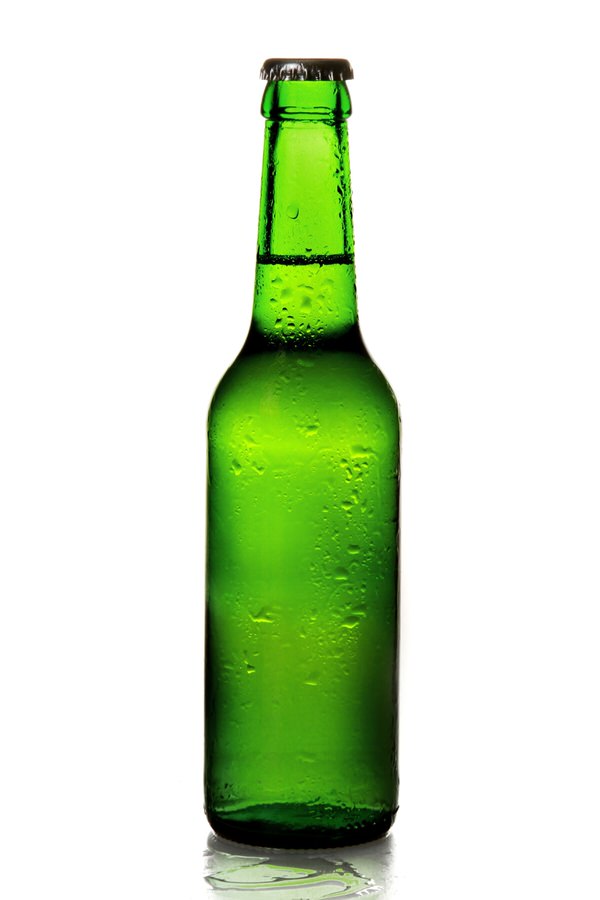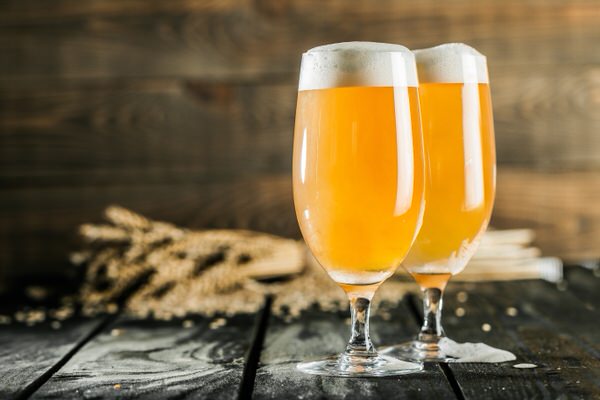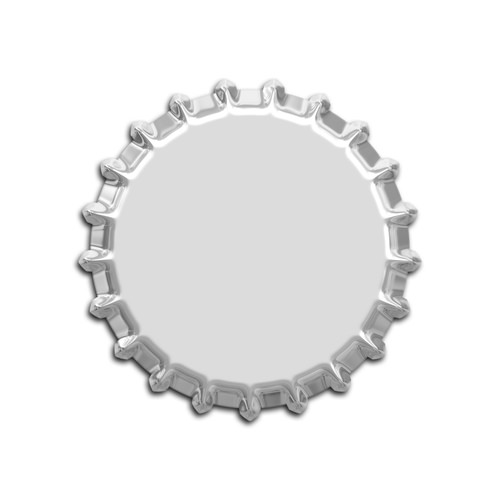While beer bottles are a familiar sight globally, the reasons behind their distinctive appearance are often overlooked. The various colors of beer bottles serve a specific purpose: to preserve the quality of the contents for an extended period. These color choices are primarily based on practical scientific considerations, complemented by some marketing elements.
A Quick History of Beer Bottles

The history of beer traces back to ancient times, even predating Noah’s Ark. Glass bottles have been utilized for beer production since the 16th century. However, it wasn’t until the late 17th century that commercial bottling began, presenting challenges for manufacturers who faced issues with the fragility of glass bottles under the pressure of CO2 used in the beer-making process. It took approximately a century before the discovery of longneck bottles as a solution to this problem.
Even today, longneck beer bottles remain the most popular style, but the market has seen the introduction of innovative designs such as “forties” (forty-ounce bottles) and short pony bottles over the years. With advancements in glass strength compared to the past, beer bottlers now have the flexibility to use different bottle shapes effectively and safely. While beer production has existed since the late 17th century, the demand for both beer and beer bottles experienced a significant surge after World War I.
Understanding Beer Bottle Colors
Initially, glass was chosen as the optimal material for storing beer due to its superior ability to maintain the liquid’s freshness over extended periods. However, it took time to realize that clear glass was not suitable for beer preservation. Clear beer bottles exposed to sunlight quickly resulted in undesirable consequences. The beer would turn sour, with a noticeable skunk-like smell and taste.
Extensive investigations were conducted to understand why beer stored in glass bottles spoiled rapidly. Scientific research provided evidence that ultraviolet rays from the sun were responsible for damaging the acids present in hops. This triggered a chemical reaction that produced a compound nearly identical to the scent of a skunk. Thus, the term “skunky beer” was a literal description of unpleasant beer flavors. In the brewing industry, the term “lightstruck” is used to describe beer that has gone bad due to light exposure. Any beer containing hops is susceptible to skunking. However, advancements in the beer industry have led to the development of light-stable hops, preventing this chemical reaction when exposed to solar radiation.
Before the innovations of the modern beer bottling industry, manufacturers had to find a solution to protect their beer batches from UV rays. They discovered that using brown beer bottles would act as a shield against UV rays, similar to how sunglasses protect our eyes. Even today, brown beer bottles are widely employed by many popular beer producers.
The Green Beer Bottle Story

Brown glass bottles continue to be the preferred choice for beer bottling, as they offer optimal protection against UV rays. However, there was a period during World War II when the demand for brown glass exceeded supply. This led many companies to resort to using green glass for beer bottle production. Although green glass did not provide the same level of protection as brown glass, it still offered better shielding compared to clear glass.
The usage of green glass by beer producers became associated with higher quality beers. This distinction made it easier for consumers to identify beers from prestigious European breweries, elevating the green bottle to a symbol of status. While modern beer manufacturers no longer face the necessity of using green glass, some companies, such as Heineken, continue to use it for branding and marketing purposes.
Regarding clear glass bottles, advancements in technology now allow for the application of UV protectant coatings. This coating ensures that beer stays just as fresh in clear glass bottles, mitigating the potential negative effects of UV rays.
Crafting Beer in the Comfort of Your Own Home
In recent times, there has been a growing trend of friends coming together to engage in the delightful activity of brewing their own specialty beers at home. Brewing parties have emerged as a fantastic way to not only spend quality time with friends but also indulge in the creation of the very beverage you all love to savor.

For those interested in homebrewing, a plethora of recipes can be found online catering to various craft beer preferences. For the more ambitious individuals, brewing and bottling their own beer presents an excellent opportunity to create special gifts for friends and family.
After brewing the beer according to the chosen recipe, the next step involves transferring the brew into bottles. Prior to use, it is crucial to sanitize the bottles thoroughly. Placing the bottles inside a large pan helps keep them upright and facilitates easy cleanup in case of spills.
Once the beer is poured into the bottles, the caps need to be securely placed on top. A specialized clamping tool is often employed to ensure proper sealing. It is important to note that most beers require a certain period of time to set and carbonate. Therefore, it is advisable to store the bottles in a dark pantry or cabinet, allowing for optimal carbonation to take place. Homemade brews can typically be stored for up to 12 months before they begin to lose flavor.
When the brews are ready to be enjoyed, it is recommended to refrigerate them overnight, ensuring a delightful cold serving temperature prior to consumption.
Personalizing your beer bottles adds a special touch
When producing ample amounts of your homebrew to share with friends and family, you have the perfect opportunity to leave your personal mark on the bottles. Select the beer bottle that appeals to you the most, whether it’s the classic brown bottle for authenticity or a unique bottle that catches your eye.
To add a personal touch, consider having custom labels designed and printed. Include the name of your beer, your name as the brewer, the brewing date, and any additional details you wish to include. Customizing your beer bottles in this way will undoubtedly make a statement at your next party or family gathering. If you have friends who also enjoy brewing their own beer, why not host a beer tasting party where everyone can showcase their personalized brews? It’s a delightful way to share and appreciate each other’s creations.
Collectible Beer Bottles

During the 1800s, beer was primarily sold in kegs, but a variety of beer bottles can still be found and collected today. Bottled beer gained significance in the 1890s with the advent of the fermentation process, and the expansion of the railroad system in the United States further popularized the availability of beer.
Early beer bottles featured a stamped credit, indicating the brewer’s name and the production date. Initially, glass bottles were not widely used, and ceramic stoneware was the preferred material. However, as glass became more common, it offered a range of colors including blue, green, clear, and the familiar brown still used today.
Due to the expense of glass bottles during that era, breweries stamped their names on each bottle to encourage returns. However, bootleggers often failed to return the bottles, repurposing them for their own brews. The bottles typically did not display the word “beer” but rather focused on the brewing company’s name and the city, providing consumers with the necessary information. As breweries grew in size, terms like “brewing company” became more prevalent on beer bottles, and labels started incorporating mascots and logos.

The Early 1800’s
Beer bottle collectors pay close attention to the evolution of bottles to accurately date their finds. Here are some key developments in beer bottle design:
- 1850s: In the 1850s, beer bottles were typically short and stout, commonly used for Porter and Stout beers.
- 1870s: Beer bottles in the 1870s underwent a transformation, featuring a taller and slender shape. Additionally, quart-sized bottles were introduced during this period.
- Embossing: From the 1870s until 1918, embossing became a common practice for beer bottles. These embossed designs, particularly from the 1870s, are highly sought after by collectors due to their rarity.
- 1890s: In the 1890s, beer brewers focused on improving bottle efficiency, leading to standardization across the industry. It was during this time that the crown cap, a metal cap with a sealing liner, was invented. This innovation revolutionized bottle sealing and remains a standard closure for beer bottles to this day.
By examining the shape, embossing, and closure method of beer bottles, collectors can gain insights into their age and historical significance.
After Prohibition
The era of Prohibition, lasting from 1919 to 1933, had a significant impact on beer bottles. During this time, the production of beer bottles ceased, as the manufacturing and sale of alcoholic beverages were prohibited. When Prohibition was lifted, there was a notable shift in the beer industry.
Many breweries began adopting beer cans as a new packaging option, which brought about a drastic change in the image of beer containers. However, collectible bottles from the post-Prohibition period are often prized for their unique colors and designs. Unusual colors, along with the condition of the bottle and its label, play a role in determining their value as collectibles.
Beer bottles have a rich and lengthy history in America, reflecting the popularity of this beverage around the world. While the primary focus is often on the liquid inside the bottle, there is also a certain beauty and intrigue associated with vintage and antique beer bottles. They tell a captivating story of the cultural significance and evolution of this beloved drink.
